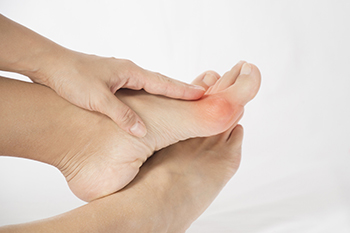
Types of Bunion Surgery
Tuesday, 03 May 2022 00:00
A bunion is easy to identify. It is defined as a bony protrusion on the side of the big toe and the skin may appear to be red. A bunion can develop as a result of genetic factors, or from wearing shoes that do not fit correctly. Some patients find it helpful to wear a cushion on top of the bunion as this may help to relieve some of the discomfort. Many times, larger shoes need to be purchased that can accommodate the bunion and surgery may be considered for permanent removal. There are several types of bunion surgeries that can be performed. A bunionectomy is performed to remove the bony growth, in addition to realigning the muscles, ligaments, and tendons. Having an osteotomy performed involves cutting the toe bone which may help to straighten the joints. When bones are fused, it is known as an arthrodesis. Additionally, an arthroplasty is done by removing the damaged joint, which is necessary in allowing scar tissue to form. If you have developed a bunion, it is strongly advised that you seek the care of a podiatrist who can provide the correct treatment method for you.
If you are suffering from bunion pain, contact Dr. Randy Garr of Utah. Our doctor can provide the care you need to keep you pain-free and on your feet.
What Is a Bunion?
Bunions are painful bony bumps that usually develop on the inside of the foot at the joint of the big toe. As the deformity increases over time, it may become painful to walk and wear shoes. Women are more likely to exacerbate existing bunions since they often wear tight, narrow shoes that shift their toes together. Bunion pain can be relieved by wearing wider shoes with enough room for the toes.
Causes
- Genetics – some people inherit feet that are more prone to bunion development
- Inflammatory Conditions - rheumatoid arthritis and polio may cause bunion development
Symptoms
- Redness and inflammation
- Pain and tenderness
- Callus or corns on the bump
- Restricted motion in the big toe
In order to diagnose your bunion, your podiatrist may ask about your medical history, symptoms, and general health. Your doctor might also order an x-ray to take a closer look at your feet. Nonsurgical treatment options include orthotics, padding, icing, changes in footwear, and medication. If nonsurgical treatments don’t alleviate your bunion pain, surgery may be necessary.
If you have any questions, please feel free to contact our office located in Provo, UT . We offer the newest diagnostic and treatment technologies for all your foot care needs.





